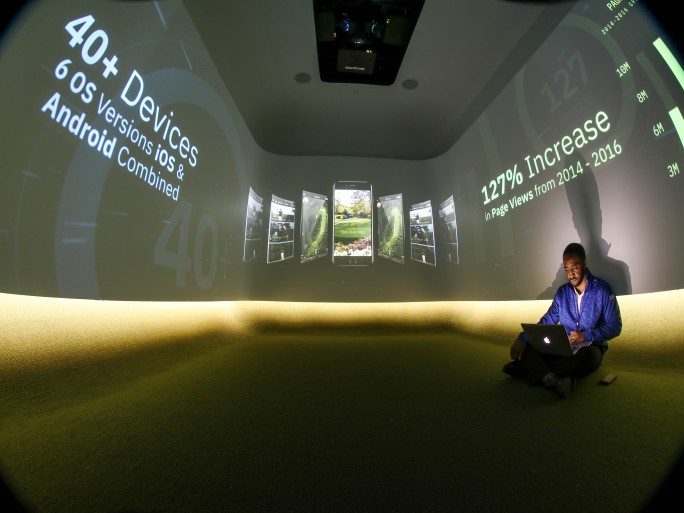The All England Club (AELTC) and the Augusta National Golf Club share a lot in common. Both Wimbledon and the US Masters are regarded as the most prestigious tournaments in their respective sports and both venues are a monument to each organisation’s attention to detail.
Both organisations are obsessed with maintaining the prestige and traditions of their competitions. Neither is immune to commercialisation, but financial gain is not sought at the expense of their values.
It is these similarities that have led to both partnering with the same technology partner – IBM – in the hope that technology can cement their positions.
Masters and IBM
IBM has been a Masters partner since 1996, when it created the first ever official website. Though extremely primitive by today’s standards, it has been refined each year and paved the way for numerous technical enhancements.
These include the official mobile application, live streaming (4K was offered for the first time in 2016) and ball tracking.
Last year saw the use of IBM Watson to detect social trends and see what official content did well and on what platform. Unlike other sporting events, the Masters only lasts for four days so the ability to react instantly is essential.
And it is this philosophy that has led to the latest use of cognitive computing for this year’s tournament.
Cognitive video
Like other major sporting events, organisers want to engage fans off the course with video content. But with 90 players and four 18-hole rounds with multiple camera angles, broadcasters amass thousands of hours of video. This is a huge amount to look over and package over a four day period.
IBM will use this year’s championship to see how Watson can automatically detect entertaining videos. Algorithms will look at swings, celebrations, commentator audio and crowd reaction to see what is exciting or noteworthy, and use television graphics and image recognition to detect player and the hole they are on.
The highlight package is generated, complete with metadata, and rapidly sent to a dashboard where it can be reviewed and sent to broadcasters or to other channels. Watson will also help transcribe interviews for Video on Demand content.
Big Blue has also set up a ‘cognitive room’ in the Masters media centre, complete with wall-to-wall screens. Here, visitors will be able to ask Watson questions and get answers or relevant content.
If successful, the system could be used at the 2018 championships – not this year – but IBM believes its the first time cognitive computing has ever been used to rank-order highlights during a game.
Big Blue has also set up a ‘cognitive room’ in the Masters media centre, complete with wall-to-wall screens. Here, visitors will be able to ask Watson questions and get answers or relevant content.
In the future, the idea is that by cataloguing video in such a way, golf fans can get more personalised highlights and follow certain players. IBM also hopes to use this in tennis tournaments too.
Augusta National does things the way it wants. That’s why television coverage is limited to only certain hours, why caddies have to wear ‘boiler’ suits, and, ironically, why mobile phones are banned on the course. At every other professional tournament they are allowed.
The Open Championship, Britain’s only golfing major, introduced such a ban in 2006 but reversed it in 2012. There’s no chance of that happening at Augusta, where even players and press are restricted, with severe penalties for infringements.
The Masters, it seems, is looking to use tech (or a lack thereof) to differentiate itself still further.
Quiz: What do you know about sport and technology?





